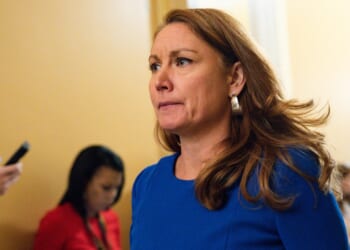
On the campaign trail, New York Mayor-elect Zohran Mamdani pledged to increase the city’s minimum hourly wage, from $16.50 to $30, by 2030. The increase would be phased in, with automatic annual hikes after 2031 tied to inflation or business productivity, whichever is higher.
The idea appealed to many, especially young voters eager for a pay bump. The mayor-elect’s supporters claim that the move will give workers a “living wage.” But the proposal, if enacted, would make the city more costly for everyone—hurting young and low-income workers the most.
Finally, a reason to check your email.
Sign up for our free newsletter today.
Start with some math. Thirty dollars is not just higher than New York’s existing minimum wage—it’s higher than the city’s median wage, which was $27.45 as of 2023, down slightly from 2021 in inflation-adjusted terms.
When the minimum wage exceeds the median, workers who previously earned the median demand pay increases to maintain their differential with less-experienced workers. This creates what economists call a “ripple effect,” as everyone within a firm demands his own raise to match his skills and experience to the new pay floor.
This dynamic will hit low-margin industries hardest. Mamdani’s proposed minimum-wage hike will affect roughly half of workers in Gotham, many of whom toil in restaurants, retail, and health care. In those industries, pay ladders are tight, and firms have less flexibility to meet higher-skilled workers’ requests for wage increases.
The proposed increase will therefore likely lead to job losses. Research shows that firms remove or replace at least some of their workforce in response to new wage requirements. Raising the wage floor forces businesses to choose between retaining lower-skilled workers, who previously earned something closer to their market value, and laying off higher-skilled workers. Businesses are more likely to hold on to more-skilled workers and automate the jobs previously performed by their less-skilled counterparts—who then get fired.
So, a major minimum wage hike will reduce employment. How will it affect New Yorkers’ cost of living?
Generally, businesses elevate prices in response to labor-cost increases, including minimum-wage hikes. For the kinds of businesses that minimum-wage hikes affect most—such as restaurants, retail, recreation, and health-care-services firms—evidence shows a 10 percent increase in the minimum wage results in a 0.36 percent increase in grocery and drug-store product prices.
Those most likely to be negatively affected—both as workers and as consumers—are the young. A $30 wage floor in New York City would raise the cost of the goods and services that young and low-income workers buy most—fast-food meals, bodega coffee and sandwiches, grocery basics, dollar-store and pharmacy items, haircuts and nail services, laundromats/dry cleaning, movie tickets and gym day-passes, and delivery/takeout fees.
Furthermore, young workers in New York City already face steep unemployment rates. In 2024, youth unemployment (ages 16–24) reached 13.2 percent, higher than the national youth rate and the unemployment rate of every other age group in the city.
Young people who are employed typically work in lower-skilled industries, such as restaurants, retail, recreation, and care work. These sectors’ employees are most likely to earn minimum wage and therefore stand to lose hours or even their jobs after a minimum-wage increase.
The Congressional Budget Office estimates that a 10 percent rise in the minimum wage reduces teen employment by about 0.7 percent. Using the same metric, raising New York City’s wage floor 82 percent would reduce Gotham’s teen employment by roughly 5 percent to 6 percent, on average. Teenagers who manage to keep their jobs will probably see fewer hours, meaning less job experience, fewer opportunities for mentoring, and slower wage growth in the future.
Young people may have shot themselves in the foot, in other words, by supporting Zohran Mamdani. The soon-to-be-mayor’s “$30 by ’30” will make New York costlier, especially for the young, the least able to afford it.
Photo by Liao Pan/China News Service/VCG via Getty Images
City Journal is a publication of the Manhattan Institute for Policy Research (MI), a leading free-market think tank. Are you interested in supporting the magazine? As a 501(c)(3) nonprofit, donations in support of MI and City Journal are fully tax-deductible as provided by law (EIN #13-2912529).
Source link


















